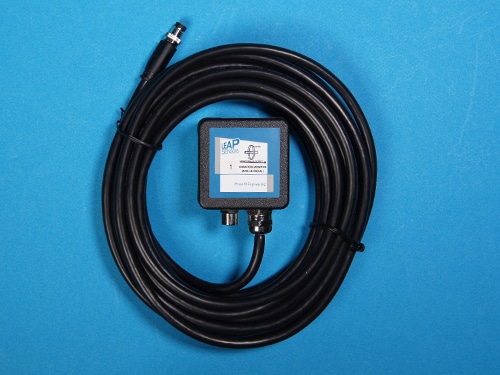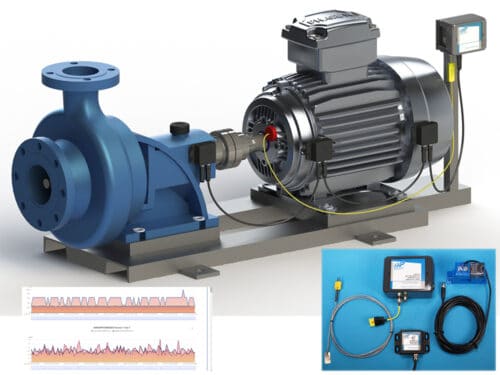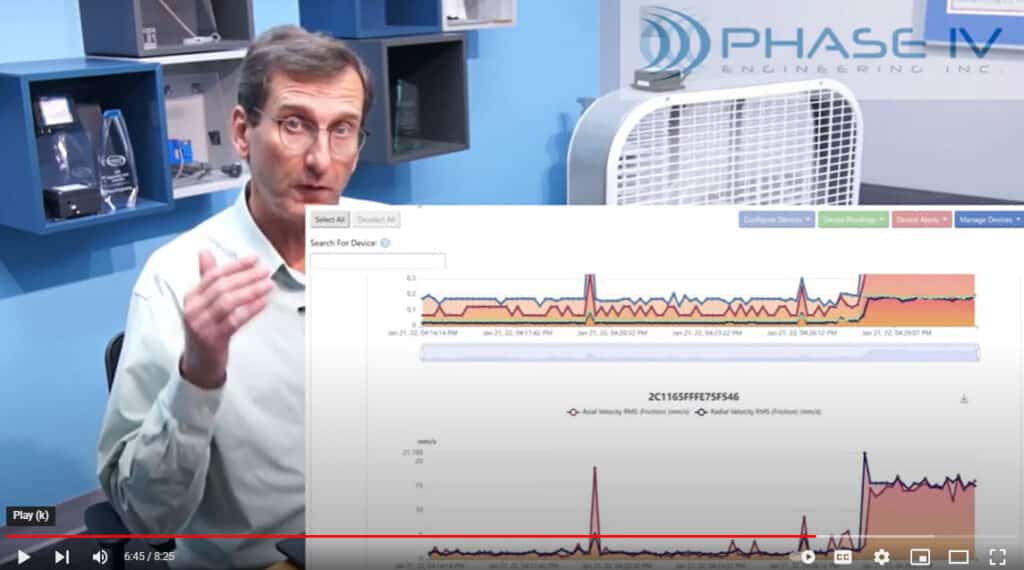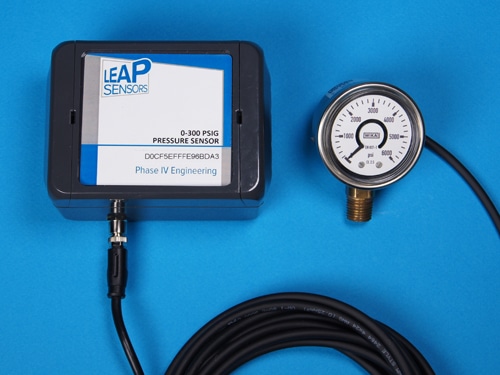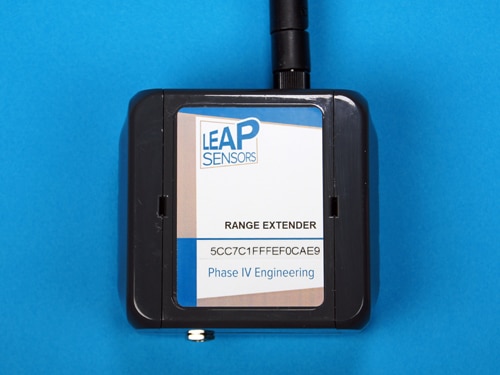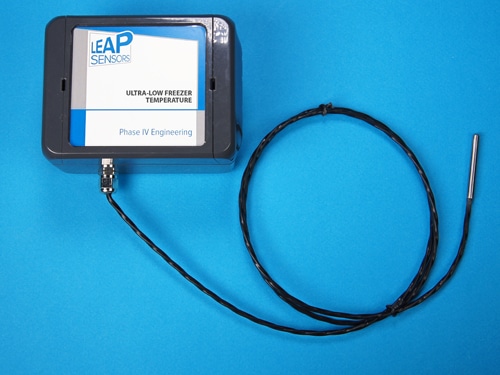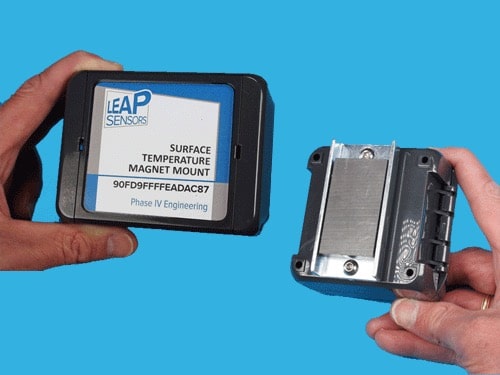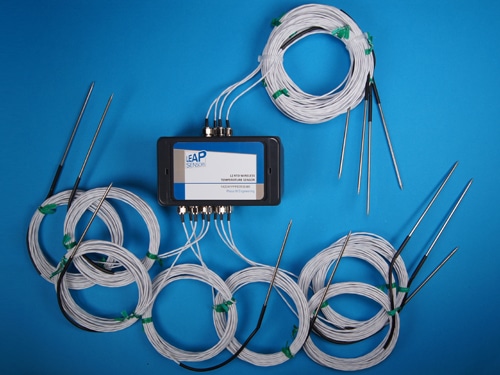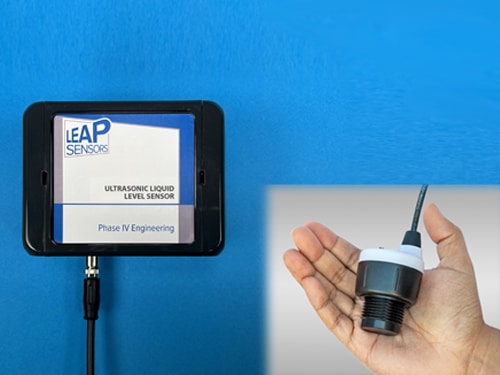-
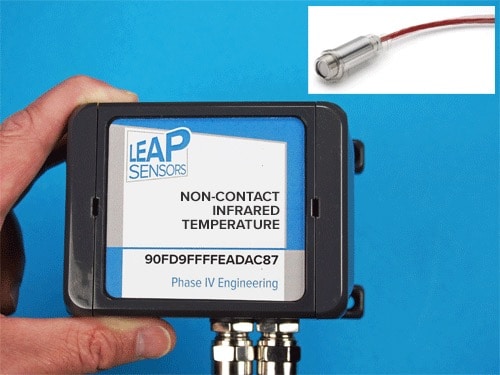 Ideal for monitoring temperature with a non-contact IR sensor. Standard model measures temperatures from -20C to 1000C with a 20:1 field of view. Contact us if you need an application specific wireless sensor with different specifications. Part of the breakthrough Leap Sensors® system. Build your quote here:
Ideal for monitoring temperature with a non-contact IR sensor. Standard model measures temperatures from -20C to 1000C with a 20:1 field of view. Contact us if you need an application specific wireless sensor with different specifications. Part of the breakthrough Leap Sensors® system. Build your quote here: -
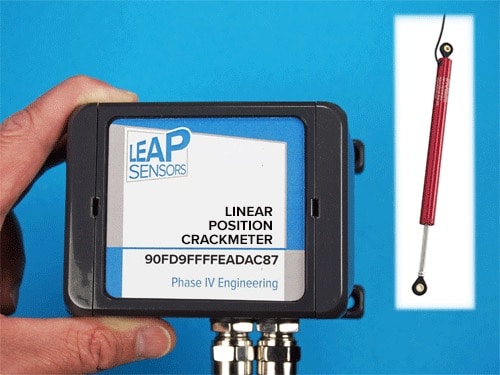 Sensor transceiver node designed to integrate with a wide range of linear position sensors and crack monitors with common outputs such as 0-5V, 4-20 mA, and RS485. The crack monitor is powered from the battery in the Leap transceiver node. When combined with a wireless transmitter, these sensors are very effective at monitoring changes in cracks or other movement over time in remote locations. Part of the breakthrough Leap Sensors® system. The linear sensor that meets your specific requirements will be integrated and tested with this device node. Contact us to find the best linear position configuration for your specific application. This external linear crack sensor is not included in this price but will be included in a final quote. Build your quote here:
Sensor transceiver node designed to integrate with a wide range of linear position sensors and crack monitors with common outputs such as 0-5V, 4-20 mA, and RS485. The crack monitor is powered from the battery in the Leap transceiver node. When combined with a wireless transmitter, these sensors are very effective at monitoring changes in cracks or other movement over time in remote locations. Part of the breakthrough Leap Sensors® system. The linear sensor that meets your specific requirements will be integrated and tested with this device node. Contact us to find the best linear position configuration for your specific application. This external linear crack sensor is not included in this price but will be included in a final quote. Build your quote here: -
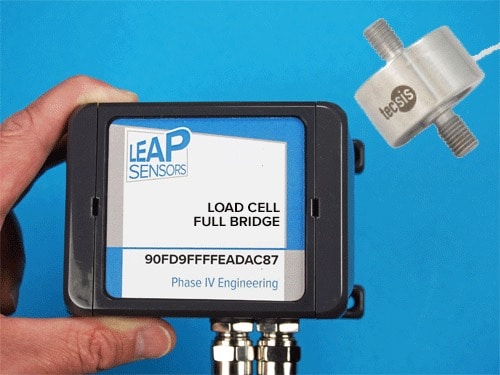 Wireless transceiver node designed to integrate with all types of load cell sensors.
Wireless transceiver node designed to integrate with all types of load cell sensors.Wireless Load Cell Demonstration and Tutorial
Contact us to find the best load cell configuration for your specific application. Part of the breakthrough Leap Sensors® system. Build your quote here: -
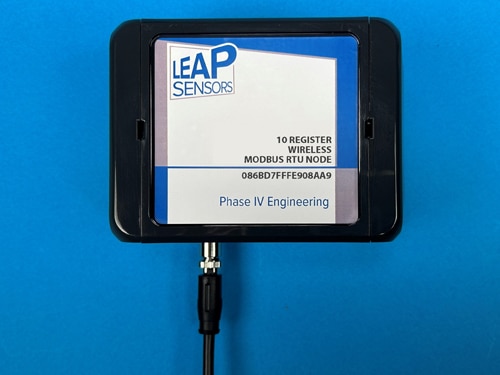 Wireless transceiver node with an RS485 Modbus RTU interface can read up to 10 Modbus registers to track valuable machine monitoring data. Can be used with almost any Modbus RTU sensor and communication device. Contact us to discuss best options for your application. Connect the transceiver node to a variable frequency drive (VFD) to collect data such as electric current draw, voltage levels, RPM, temperatures, and error conditions. Ideal for predictive maintenance or automated process auditing. Due to the high-power consumption of the Modbus RTU interface, this transceiver node typically uses a external power source to power the node. Battery power is an option if data sampling and transmitting is done every few hours. Part of the breakthrough Leap Sensors® system. Build your quote here:
Wireless transceiver node with an RS485 Modbus RTU interface can read up to 10 Modbus registers to track valuable machine monitoring data. Can be used with almost any Modbus RTU sensor and communication device. Contact us to discuss best options for your application. Connect the transceiver node to a variable frequency drive (VFD) to collect data such as electric current draw, voltage levels, RPM, temperatures, and error conditions. Ideal for predictive maintenance or automated process auditing. Due to the high-power consumption of the Modbus RTU interface, this transceiver node typically uses a external power source to power the node. Battery power is an option if data sampling and transmitting is done every few hours. Part of the breakthrough Leap Sensors® system. Build your quote here: -
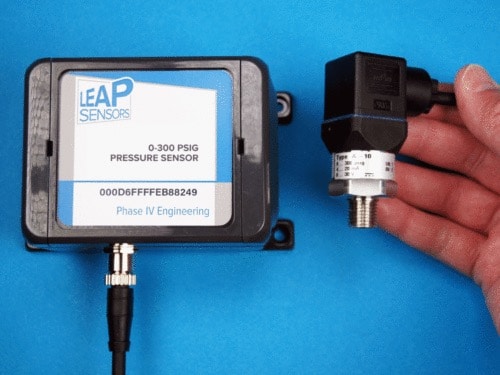 The Leap wireless pressure transceiver can integrate with every type of WIKA pressure transducer - 4-20mA, 0-10V, and I2C outputs. The external industrial sensor may be powered by an optional 12 or 24V power supply driven from the over-sized Leap Sensor node battery. No external power source is needed with the 12/24V power supply option (LP-1PXX). See below for other options to configure this industrial wireless sensor node to your exact needs. Contact us to find the best combination or let us know which WIKA sensor you would like us to integrate. See the data sheet for detailed specifications. Part of the breakthrough Leap Sensors® system. Build your quote here:
The Leap wireless pressure transceiver can integrate with every type of WIKA pressure transducer - 4-20mA, 0-10V, and I2C outputs. The external industrial sensor may be powered by an optional 12 or 24V power supply driven from the over-sized Leap Sensor node battery. No external power source is needed with the 12/24V power supply option (LP-1PXX). See below for other options to configure this industrial wireless sensor node to your exact needs. Contact us to find the best combination or let us know which WIKA sensor you would like us to integrate. See the data sheet for detailed specifications. Part of the breakthrough Leap Sensors® system. Build your quote here: -
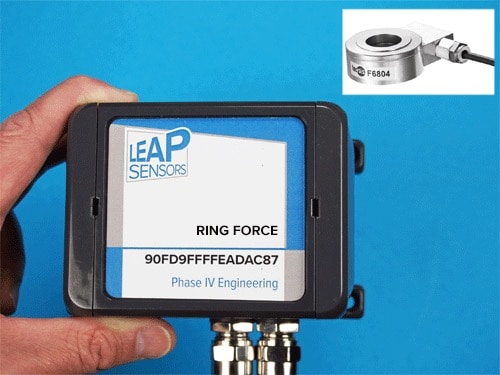 Wireless transceiver node designed to integrate with any ring force transducer that has one of these outputs: mV/V, 4-20 mA, or 0-10V. The Leap transceiver node provides power to the ring force transducer. Ideal for monitoring preloads, testing equipment, clamping forces, and remote ongoing force and load monitoring. Contact us to find the best ring force transducer configuration for your specific application. Part of the breakthrough Leap Sensors® system. Build your quote here:
Wireless transceiver node designed to integrate with any ring force transducer that has one of these outputs: mV/V, 4-20 mA, or 0-10V. The Leap transceiver node provides power to the ring force transducer. Ideal for monitoring preloads, testing equipment, clamping forces, and remote ongoing force and load monitoring. Contact us to find the best ring force transducer configuration for your specific application. Part of the breakthrough Leap Sensors® system. Build your quote here: -
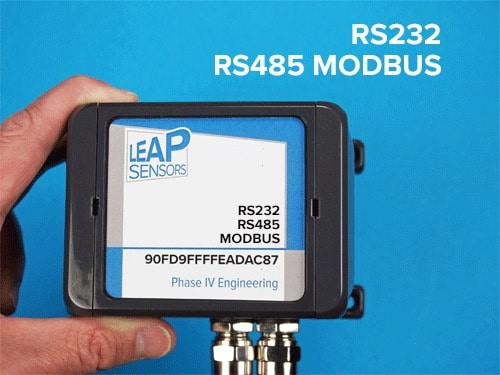 Integrate any sensor with an RS485, RS485 Modbus, or RS232 output into the Leap Sensors system to convert it to a wireless sensor. The sensor is powered by the battery in the Leap transceiver node with a power supply that can be specified from 3.6V to 24 volts. No external power source is needed. Contact us to let us help you make your selected RS485 or RS232 sensor wireless. Part of the breakthrough Leap Sensors® system. Build your quote here:
Integrate any sensor with an RS485, RS485 Modbus, or RS232 output into the Leap Sensors system to convert it to a wireless sensor. The sensor is powered by the battery in the Leap transceiver node with a power supply that can be specified from 3.6V to 24 volts. No external power source is needed. Contact us to let us help you make your selected RS485 or RS232 sensor wireless. Part of the breakthrough Leap Sensors® system. Build your quote here: -
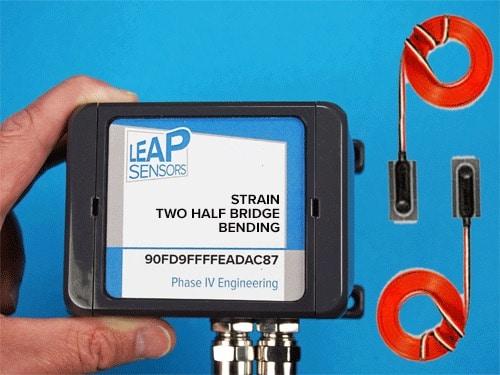 Integrate almost any strain sensor into a Leap Sensors wireless transceiver node for structural health monitoring (SHM) on bridges, overpasses, support beams, and more. Easy to install on existing structures. Be up & running in just a few minutes.
Integrate almost any strain sensor into a Leap Sensors wireless transceiver node for structural health monitoring (SHM) on bridges, overpasses, support beams, and more. Easy to install on existing structures. Be up & running in just a few minutes.Wireless Strain Demonstration and Tutorial
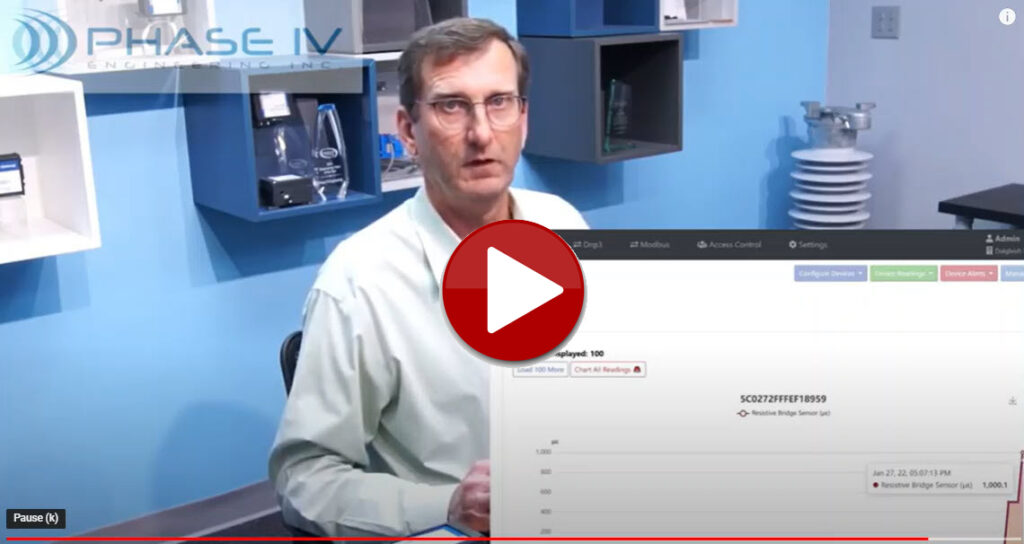 Contact us to find the best strain sensor configuration for your specific application.
Part of the breakthrough Leap Sensors® system.
Strain sensors are not included. Contact us and one of our experts can recommend strain gauges for your application. We offer easy-to-install spot-weld-on strain sensors. We also have a Micro Measurements battery-powered spot welder available for rent.
Build your quote here:
Contact us to find the best strain sensor configuration for your specific application.
Part of the breakthrough Leap Sensors® system.
Strain sensors are not included. Contact us and one of our experts can recommend strain gauges for your application. We offer easy-to-install spot-weld-on strain sensors. We also have a Micro Measurements battery-powered spot welder available for rent.
Build your quote here: -
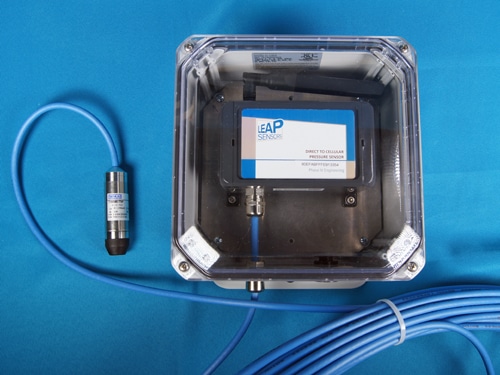 This unique wireless sensor remotely measures the depth of a liquid in a tank or pond using a submersible pressure sensor. The Leap Sensor transceiver node uses edge computing to convert the pressure measurement to liquid depth. Completely battery-powered - no external power source needed. Optional water- and weather-proof enclosure protects the sensor transceiver node. Optional direct-to-cellular technology for remote locations. Data is sent directly to a cloud server. Contact us for the best combination of pressure sensor and other options for your application. Part of the breakthrough Leap Sensors® system. Build your quote here:
This unique wireless sensor remotely measures the depth of a liquid in a tank or pond using a submersible pressure sensor. The Leap Sensor transceiver node uses edge computing to convert the pressure measurement to liquid depth. Completely battery-powered - no external power source needed. Optional water- and weather-proof enclosure protects the sensor transceiver node. Optional direct-to-cellular technology for remote locations. Data is sent directly to a cloud server. Contact us for the best combination of pressure sensor and other options for your application. Part of the breakthrough Leap Sensors® system. Build your quote here: -
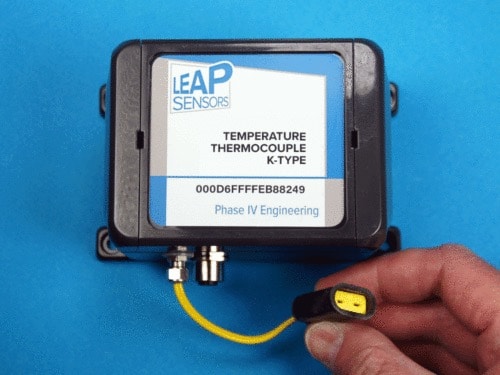
Coming Soon
This Leap wireless sensor has eight standard mini thermocouple connectors that can connect to any type of thermocouple (type K is standard). Because thermocouples can be used over a wide temperature range and thermocouples come in a huge range of probe types, this sensor addresses many harsh industrial applications. -
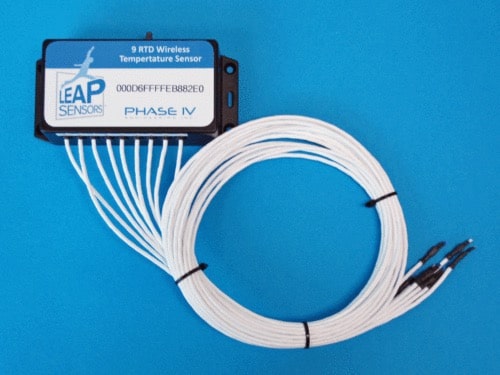 This highly versatile industrial sensor supports 9 miniature, low-mass precision RTD temperature sensors connected to a high-temperature transceiver node in an industrial enclosure.
This highly versatile industrial sensor supports 9 miniature, low-mass precision RTD temperature sensors connected to a high-temperature transceiver node in an industrial enclosure.- 3-wire RTD connection supports long cables while also maintaining high temperature accuracy.
- The entire sensor is rated to operate up to at least 125C (257F).
- Readings as fast as every 3 seconds for each of the 9 sensors.
- Data logging capability when the transceiver node is not linked to a gateway.
-
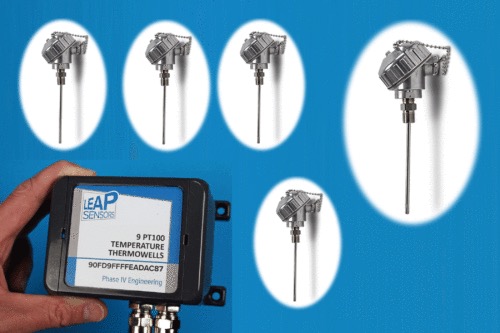 The Leap wireless thermowell sensor can integrate 1 to 9 PT100 thermowells. See our standard offerings below. Contact us if you need a different temperature probe. Part Numbers: LBI0-xT04 - 4" probe, LBI0-xT05 - 6" probe, LBI0-xT06 - 12" probe. x=number of thermowells. Part of the breakthrough Leap Sensors® system. This wireless sensor is typically customized to specific applications. The price is for the basic, one-thermowell model. Include your requirements and we will reply with an exact quote. Build your quote here:
The Leap wireless thermowell sensor can integrate 1 to 9 PT100 thermowells. See our standard offerings below. Contact us if you need a different temperature probe. Part Numbers: LBI0-xT04 - 4" probe, LBI0-xT05 - 6" probe, LBI0-xT06 - 12" probe. x=number of thermowells. Part of the breakthrough Leap Sensors® system. This wireless sensor is typically customized to specific applications. The price is for the basic, one-thermowell model. Include your requirements and we will reply with an exact quote. Build your quote here: -
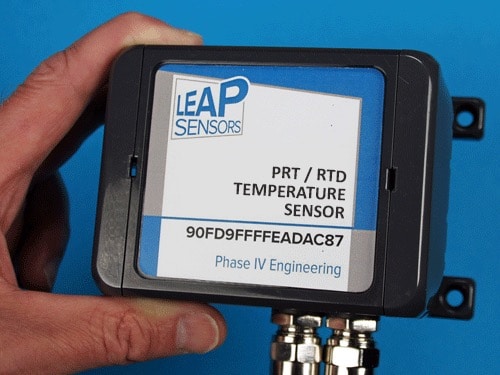 This Leap wireless transceiver node can integrate any off-the-shelf PRT or RTD Temperature sensor. The external industrial sensor may be powered by an optional 12 or 24V power supply driven from the over-sized Leap Sensor node battery. No external power source is needed with the 12/24V power supply option (LP-1TXX). See below for other options to configure this industrial wireless sensor node to your exact needs. Contact us for help integrating the best sensor probe for your application. Part of the breakthrough Leap Sensors® system. Build your quote here:
This Leap wireless transceiver node can integrate any off-the-shelf PRT or RTD Temperature sensor. The external industrial sensor may be powered by an optional 12 or 24V power supply driven from the over-sized Leap Sensor node battery. No external power source is needed with the 12/24V power supply option (LP-1TXX). See below for other options to configure this industrial wireless sensor node to your exact needs. Contact us for help integrating the best sensor probe for your application. Part of the breakthrough Leap Sensors® system. Build your quote here: -
 This Leap wireless sensor has a standard mini thermocouple connectors that can connect to any thermocouple. (Standard products comes with K-Type thermocouples.) Other thermocouple types are also available - type-B, type-S, etc. Because thermocouples can be used over a wide temperature range and thermocouples come in a huge range of probe types, this sensor addresses many industrial applications - and is one of our most popular industrial wireless sensors. Part of the breakthrough Leap Sensors® system. Build your quote here:
This Leap wireless sensor has a standard mini thermocouple connectors that can connect to any thermocouple. (Standard products comes with K-Type thermocouples.) Other thermocouple types are also available - type-B, type-S, etc. Because thermocouples can be used over a wide temperature range and thermocouples come in a huge range of probe types, this sensor addresses many industrial applications - and is one of our most popular industrial wireless sensors. Part of the breakthrough Leap Sensors® system. Build your quote here: -
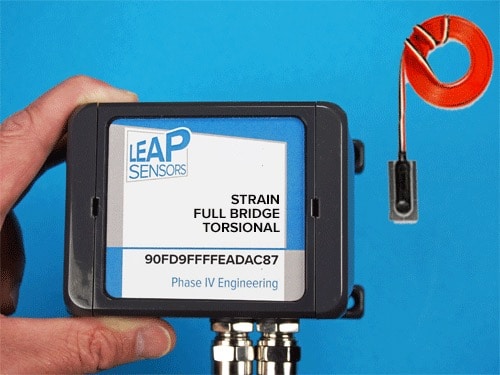 Integrate almost any strain sensor into a Leap Sensors wireless transceiver node for structural health monitoring (SHM) on bridges, overpasses, support beams, and more. Easy to install on existing structures. Be up & running in just a few minutes.
Integrate almost any strain sensor into a Leap Sensors wireless transceiver node for structural health monitoring (SHM) on bridges, overpasses, support beams, and more. Easy to install on existing structures. Be up & running in just a few minutes.Wireless Strain Demonstration and Tutorial
Contact us to find the best strain sensor configuration for your specific application. Part of the breakthrough Leap Sensors® system. Strain sensors are not included. Contact us and one of our experts can recommend strain gauges for your application. We offer easy-to-install spot-weld-on strain sensors. We also have a Micro Measurements battery-powered spot welder available for rent. Build your quote here: -
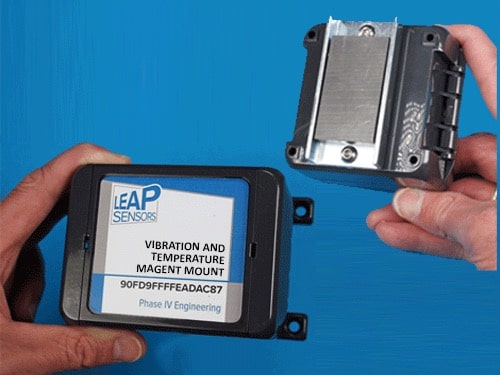
Coming Soon. Contact us for details.
This Leap vibration and temperature device node could not be easier to install. The ultra-strong magnet mounts the device node to the equipment in seconds. Vibration and temperature is conducted through the magnet to the accelerometer and temperature sensor. Ideal for monitoring large gearboxes, bearings, and motors to detect impending failures. Part of the breakthrough Leap Sensors® system. Build your quote here:
